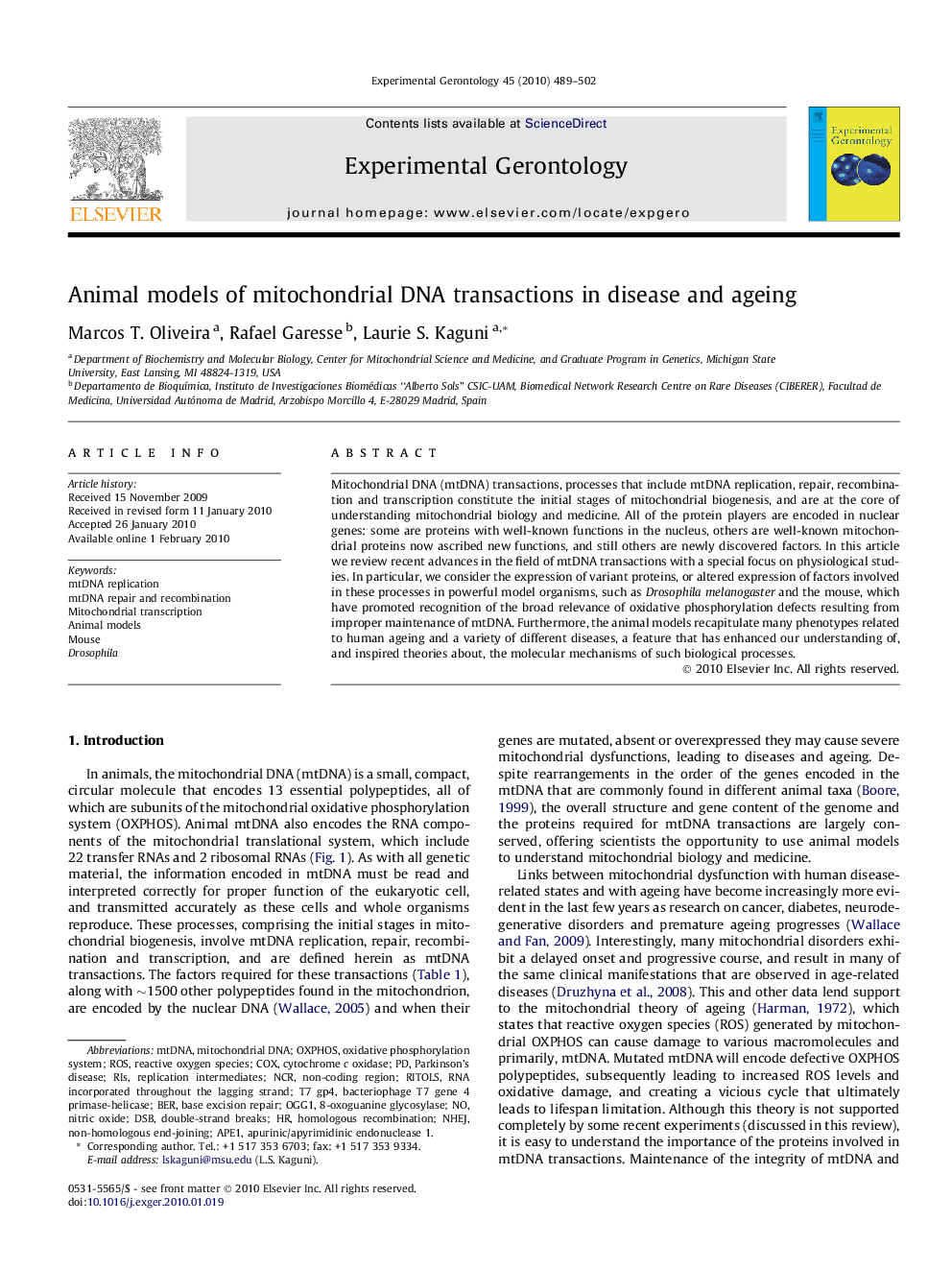| Article ID | Journal | Published Year | Pages | File Type |
|---|---|---|---|---|
| 8264751 | Experimental Gerontology | 2010 | 14 Pages |
Abstract
Mitochondrial DNA (mtDNA) transactions, processes that include mtDNA replication, repair, recombination and transcription constitute the initial stages of mitochondrial biogenesis, and are at the core of understanding mitochondrial biology and medicine. All of the protein players are encoded in nuclear genes: some are proteins with well-known functions in the nucleus, others are well-known mitochondrial proteins now ascribed new functions, and still others are newly discovered factors. In this article we review recent advances in the field of mtDNA transactions with a special focus on physiological studies. In particular, we consider the expression of variant proteins, or altered expression of factors involved in these processes in powerful model organisms, such as Drosophila melanogaster and the mouse, which have promoted recognition of the broad relevance of oxidative phosphorylation defects resulting from improper maintenance of mtDNA. Furthermore, the animal models recapitulate many phenotypes related to human ageing and a variety of different diseases, a feature that has enhanced our understanding of, and inspired theories about, the molecular mechanisms of such biological processes.
Keywords
DSBreplication intermediates8-Oxoguanine glycosylaseAPE1OGG1NCRBERRISNHEJOXPHOSCOXapurinic/apyrimidinic endonuclease 1Mitochondrial DNAROSParkinson’s diseasebase excision repairmtDNA replicationmtDNAMitochondrial transcriptioncytochrome c oxidaseOxidative phosphorylation systemdouble-strand breaksnon-homologous end-joiningAnimal modelsNon-coding regionMouseDrosophilaHomologous recombinationNitric oxideReactive oxygen species
Related Topics
Life Sciences
Biochemistry, Genetics and Molecular Biology
Ageing
Authors
Marcos T. Oliveira, Rafael Garesse, Laurie S. Kaguni,
